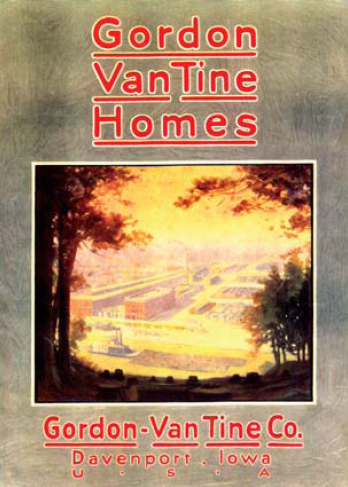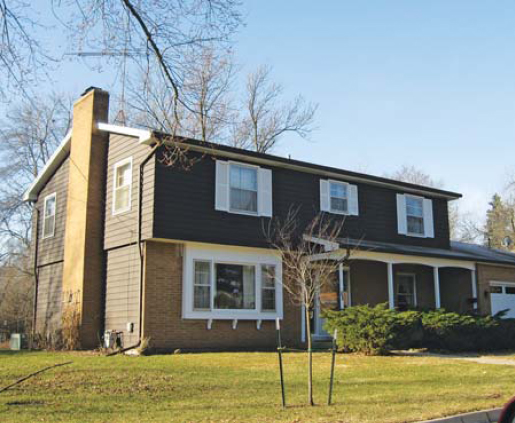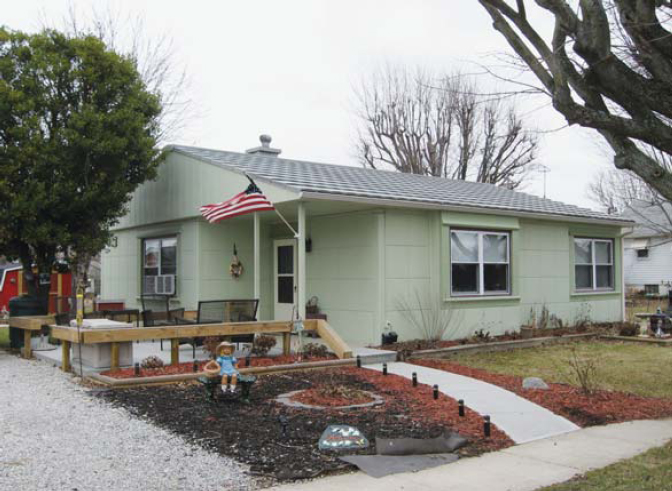
STERLING’S 1916 prediction that “within five years, at the present rate of increase, 90 percent of all frame buildings will be cut to fit in special factories” turned out to be a dream rather than a reality. In fact, by the mid-1920s, only an estimated 3 percent of new housing starts were precut buildings. Nonetheless, the precut method of construction proved to be sufficiently popular to keep eight major companies solvent until 1983.
However, major changes in the way the United States built housing proved to be detrimental to the producers of precut kits. Throughout the 1950s, tract housing became increasingly popular. A developer would buy a large tract of land, subdivide it, and put up a large number of homes of similar size and design. Developers required the use of approved designs and/or builders for their subdivisions, making it difficult for anyone to build a precut home in these locations.

The back cover of Gordon-Van Tine’s 1927 catalog shows a bygone era, a busy mill on the Mississippi River in Davenport, Iowa.
Competition from the many makers of prefabricated housing, such as Gunnison, National, Economy, U.S. Steel, Harnischfeger, and Lustron had a negative impact on Lewis/Liberty, Sterling, and Aladdin. As a standard part of their services, prefabricated home manufacturers commonly offered delivery by truck and even sent a crew to erect the house. Mail-order home purchasers usually had to pay freight and build the house themselves or hire a carpenter.
The merged Gunnison/U.S. Steel, a major producer, manufactured prefabricated homes in New Albany, Indiana, from 1935–74. Like their competitors’ homes, they consisted of factory-constructed panels, complete with interior and exterior cladding. The Lustron Company, a minor competitor, produced all-steel prefabricated homes in a retrofitted aircraft plant in Columbus, Ohio, from 1948–50. These homes commonly are misidentified as Sears homes.

The owners of this Aladdin “Fairlane” model in West Dundee, Illinois, were able to do the construction work themselves only because a contractor friend was willing to claim he was building the house.

The large steel panels, coated with vitreous enamel, are clearly visible on this prefabricated “Lustron” model in Versailles, Indiana.
Mobile homes represented a new facet of the housing market, and they became especially popular as Americans took to the roads in their automobiles. These entirely preconstructed houses on wheels could be installed on a concrete slab. Mobile home owners were able to rent lots countrywide in the new mobile home parks that popped up in the 1950s, sparing the expense of buying and selling land. Should the owner decide to move, the home simply could be pulled to a new location. Because these homes were less costly to build and easier to install, mobile home production gradually surpassed that of precut homes.
With a declining market due to demands for onsite delivery, the development of tract housing, and the growing popularity of prefabricated and mobile housing, the precut home gradually faded away. Sterling and Lewis closed in the 1970s within a year of each other. Aladdin, the pioneer of the mass-marketed kit home, hung on until 1983: the first company in the business also had the distinction of being the last.

The Aladdin “Villa” in Wakefield, Michigan. (Photograph by Dale Wolicki)